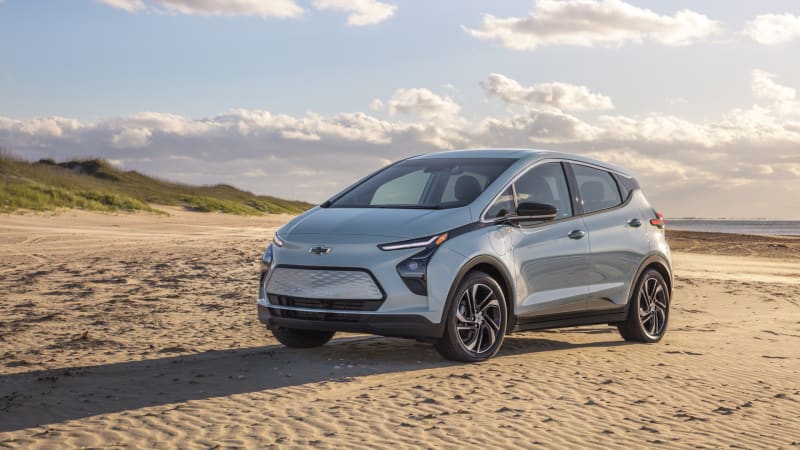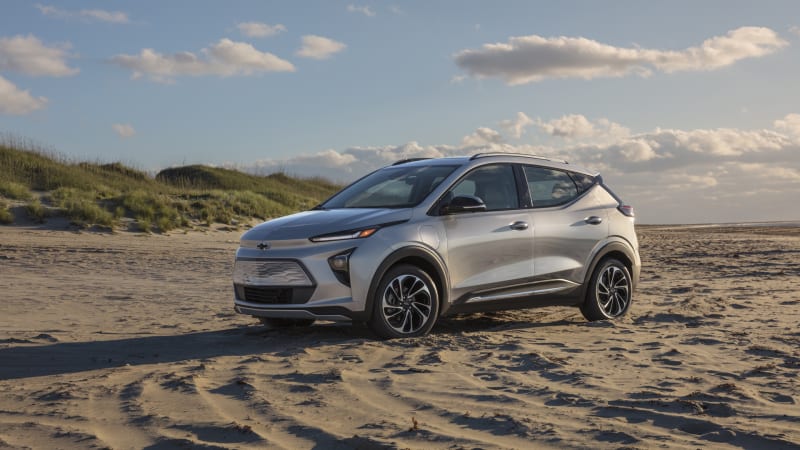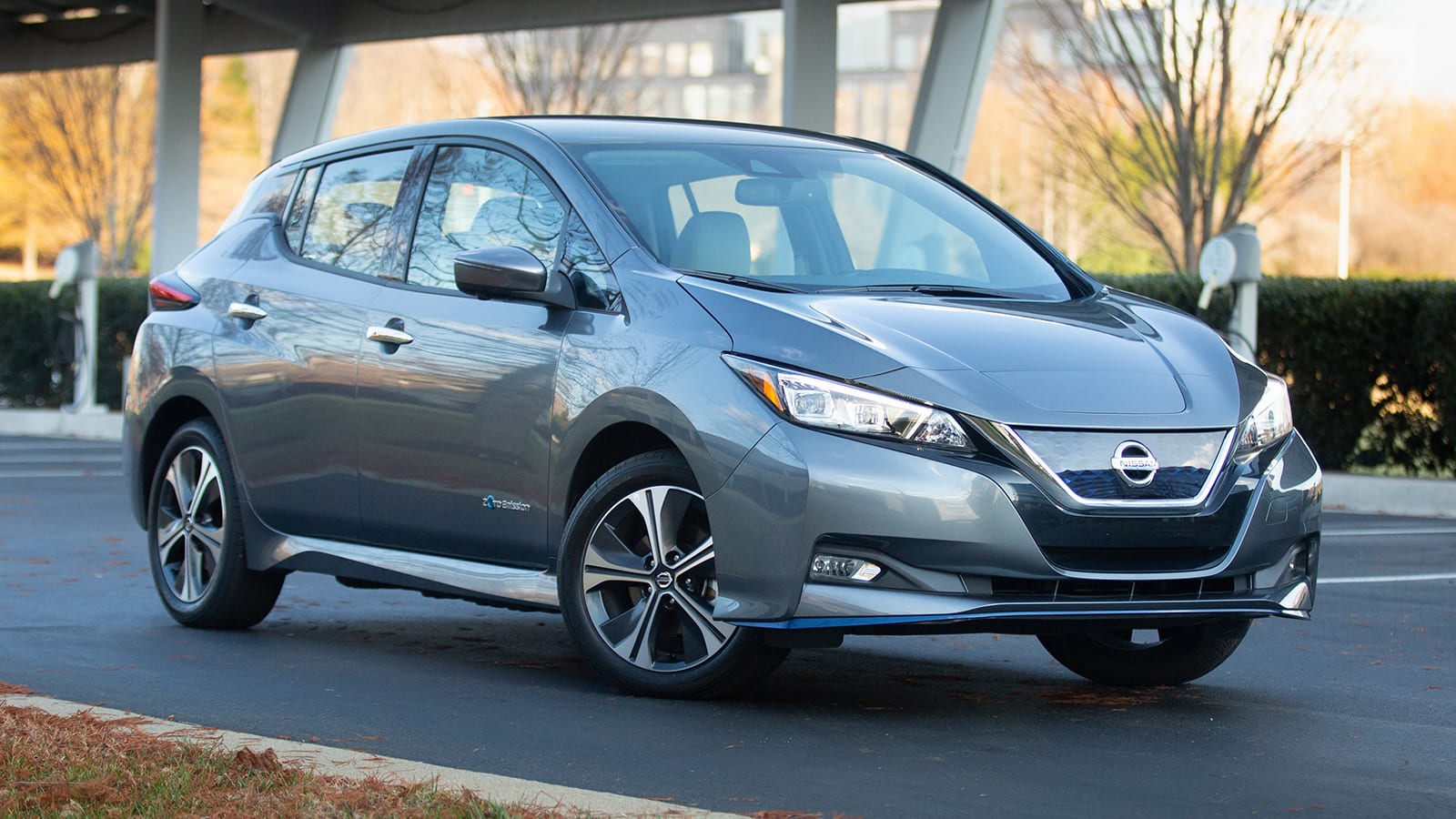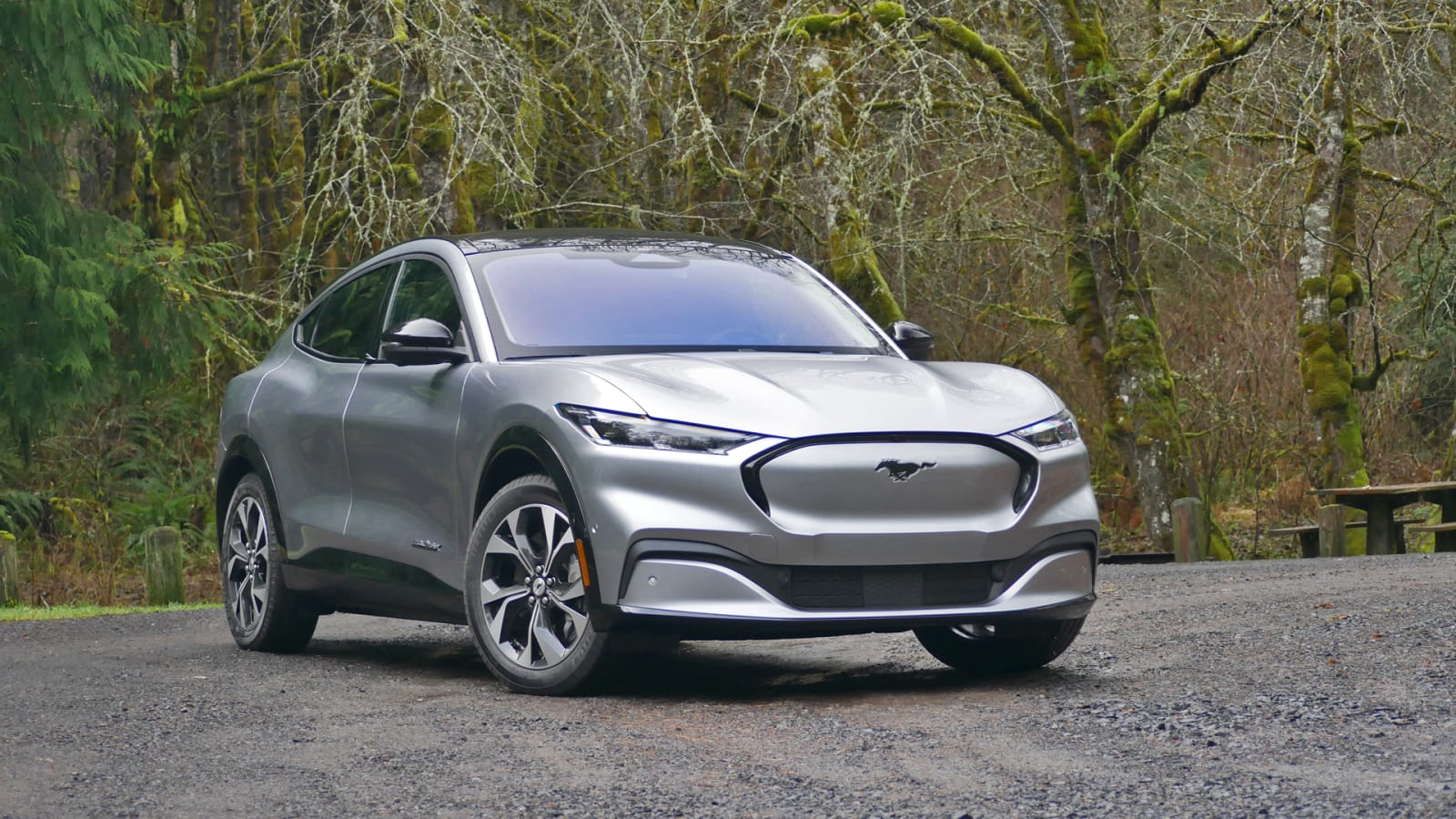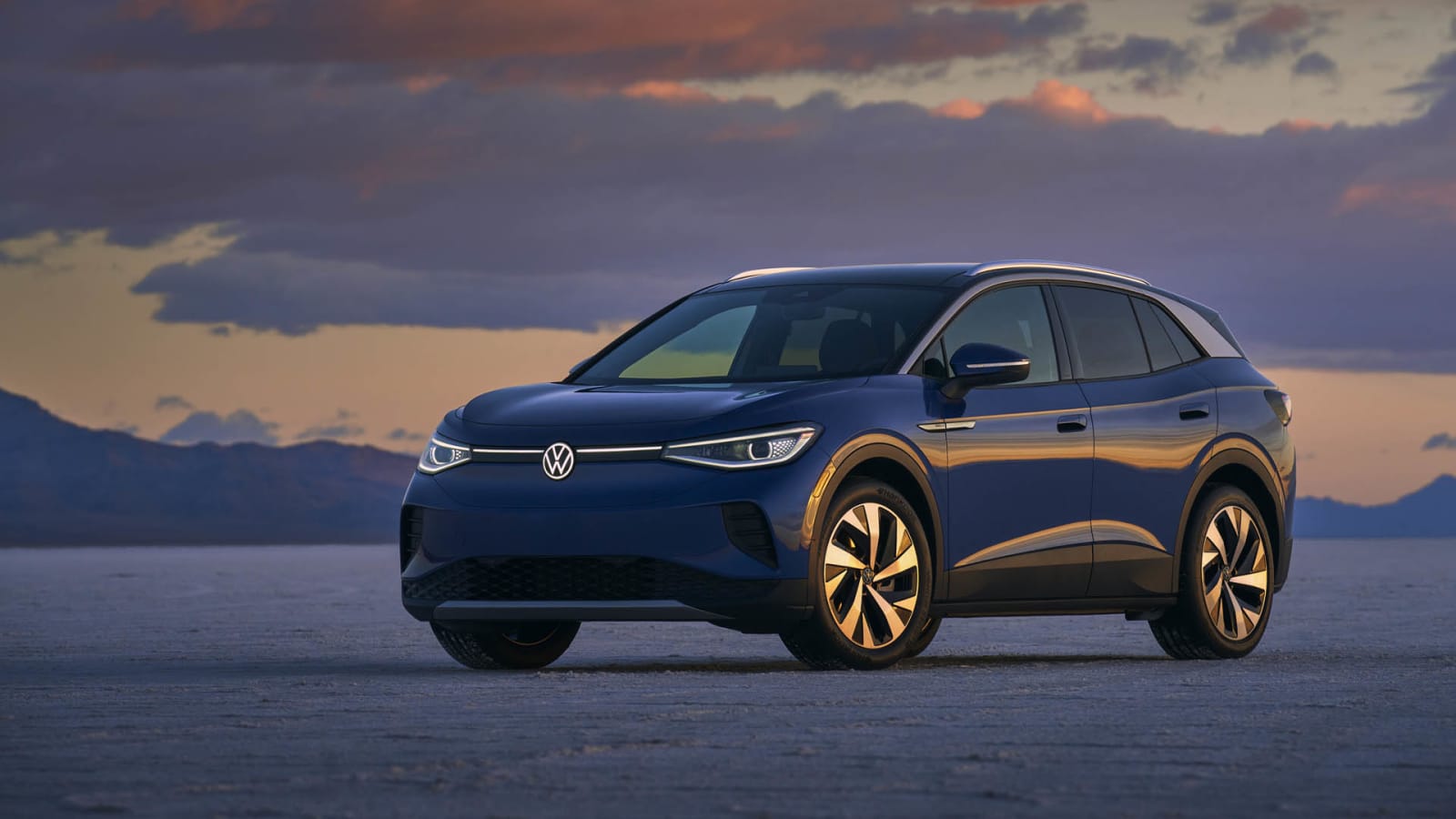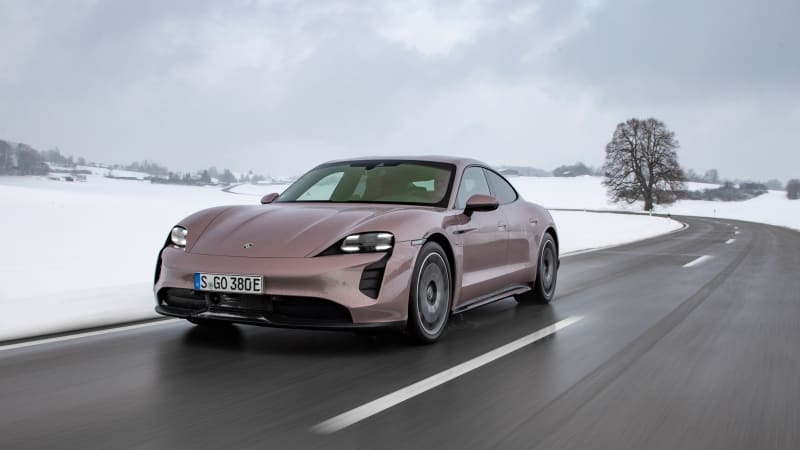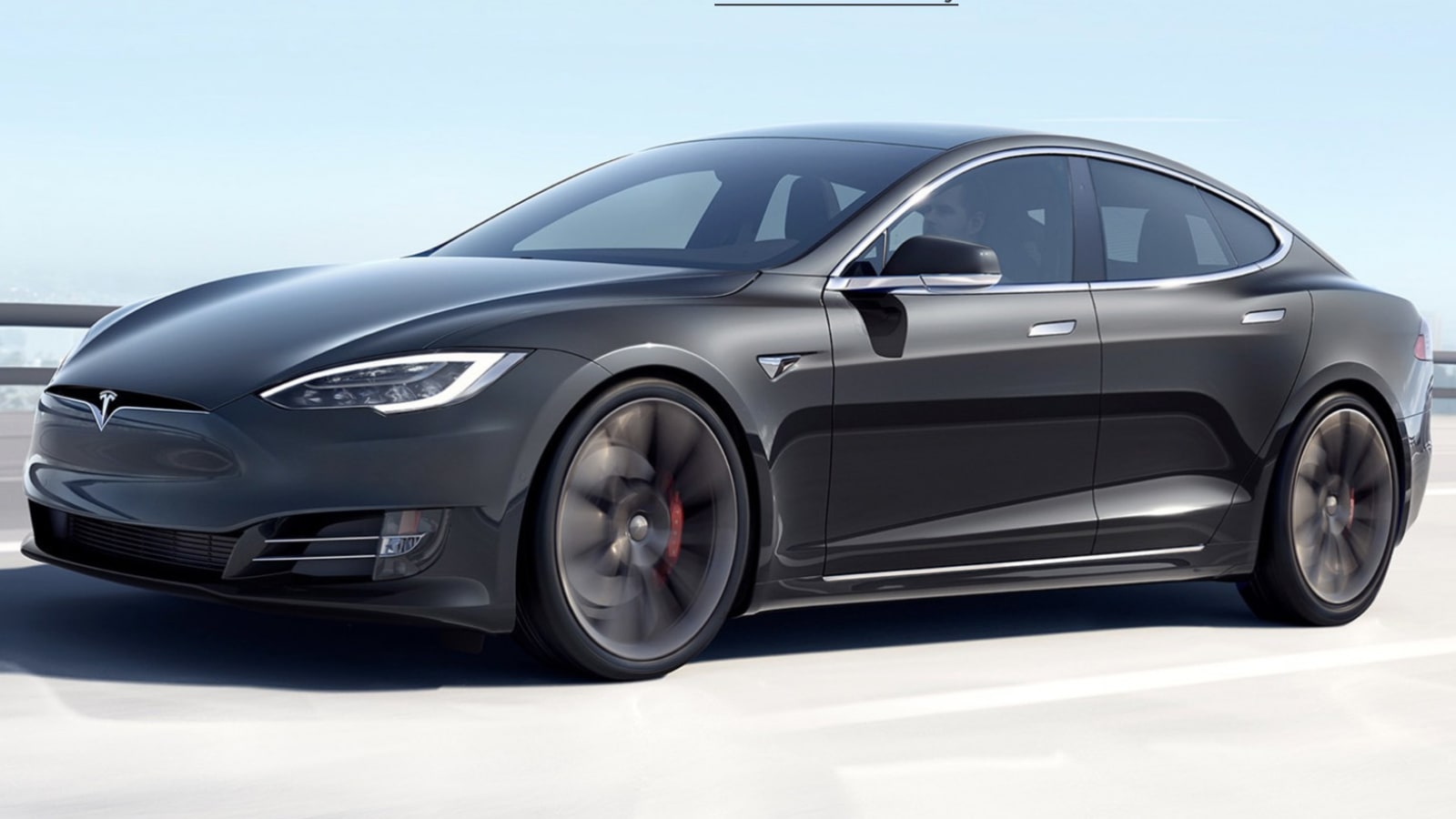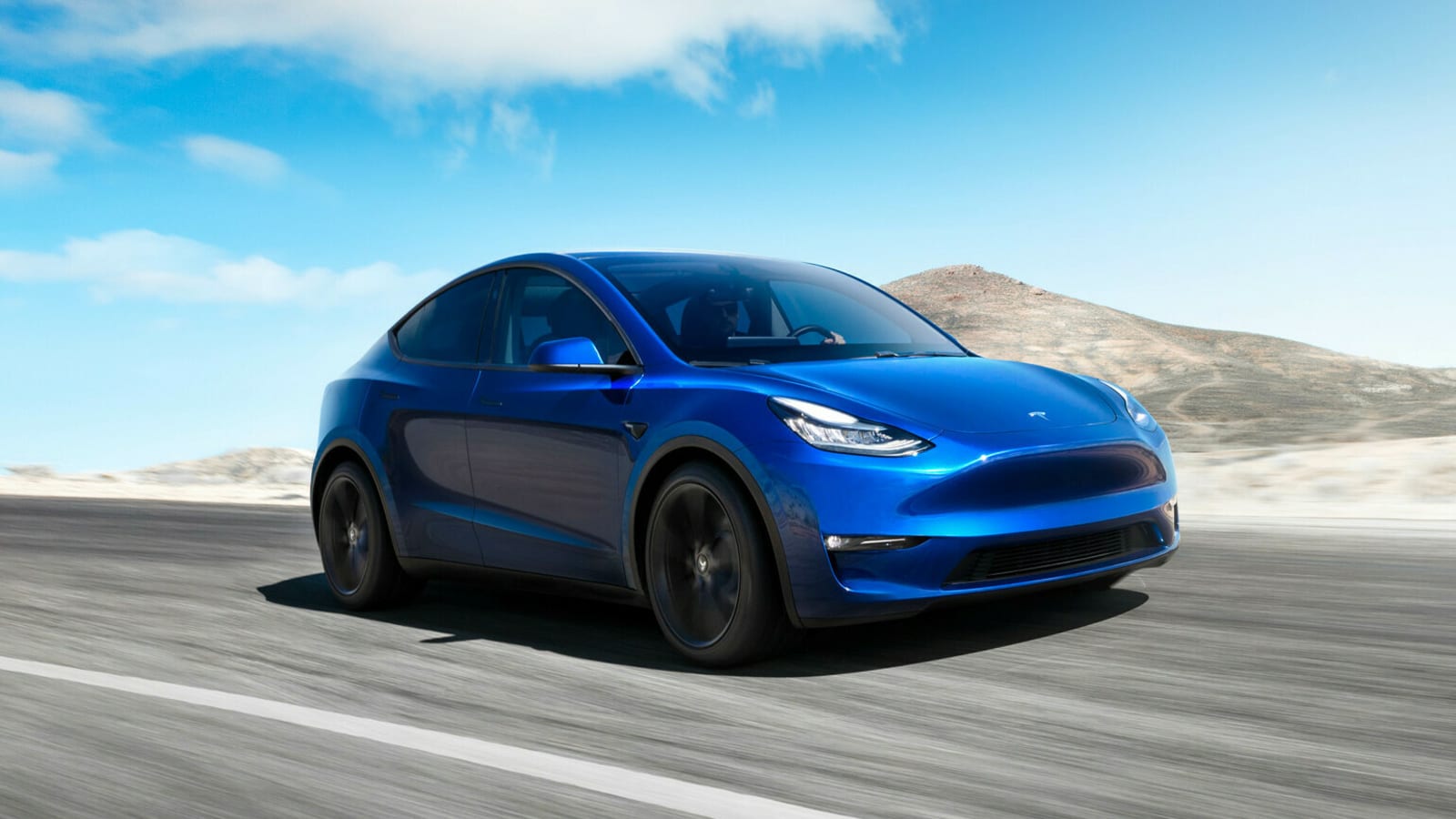Like our planet’s endangered climate, this list is subject to change. There are so many electric cars, SUVs and even trucks on the horizon, that it’s only a matter of time before we get a chance to drive something great enough to be included on this list of best electric cars (and to supplant one of the current choices).
We have broken our recommendations down alphabetically and within price segments, because obviously, as great as a Porsche Taycan and Tesla Model S are, only a tiny fraction of car buyers can afford them. Thankfully, many of the upcoming new EVs are of the more affordable variety, including the Hyundai Ioniq 5, Kia EV6 and Nissan Ariya. We look forward to testing them all as soon as possible – not to mention more expensive upcoming offerings like the Rivian R1T and R1S, Cadillac Lyriq, GMC Hummer EV, Mercedes-Benz EQS and sure, why not, the Tesla Cybertruck.
For now, though, these are the EV models that earn our top recommendation.
Note that all base prices include destination charges unless otherwise noted, but not tax incentives, fuel savings or other discounts some EV makers bake into advertised prices. However, we do indicate which cars are still eligible for federal tax credits. For those who pay enough federal tax to qualify, you can effectively subtract that amount from the base price.
Best electric cars under $35,000
Chevrolet Bolt EV and Bolt EUV
Why it stands out: Two body styles to choose from; compelling to drive; roomy back seat in EUV
Could be better: Limited cargo space in both
Read our 2022 Chevy Bolt Review
We’re grouping the revised Bolt EV and the new-for-2022 Bolt EUV together here because, just in case the pictures above aren’t illustrative enough, they’re basically the same car. The EUV has considerably more backseat space, a vaguely more SUV-ish shape, subtle styling differences and eight fewer miles of range. They’re so close together, including in price ($31,995 vs $33,995), we wonder why Chevy bothered revising and keeping around the Bolt EV at all. Either way, and most important, both are excellent electric cars made even better thanks to their shared interior, comfort and feature content upgrades (including the availability of Super Cruise for the EUV). They have ample ranges of 258 and 250 miles, respectively, to easily assuage range-anxiety fears, and the addition of a dual-level charge cord means you can easily charge at home without the need of a dedicated 240-volt charge unit (GM will even cover the costs of installing a simple 240-volt outlet in your garage). From a car perspective, they’re roomy, well-equipped, quick to accelerate and handle better than our other two affordable EV choices.
Electric range: 258 miles (EV) or 250 miles (EUV)
Base price: $31,995 (EV) and $33,995 (EUV)
Eligible for $7,500 federal tax credit?: No
Mini Cooper SE
Why it stands out: Fun to drive; unique style; premium interior
Could be better: Low range; only two doors; very small
Read our Mini Cooper SE Review
The electric Mini won’t be for everyone. Its range is less than half the other two choices in this price segment, it has half as many doors, and although not half the size, it definitely lives up to the name Mini. So, why on Earth would you want one? Well, for those with a second car for longer journeys, the Mini Cooper SE makes for a superb commuter car that’ll brighten your day with its unmatched driving fun and effervescent character. Those elements, plus the Mini’s more premium interior and sophisticated underpinnings, offset the value lost with its significant range and space disadvantage. We could make the same case for the BMW i3, but that comes with a substantially higher price than its corporate cousin, the Mini Cooper SE. Indeed, when you factor in the $7,500 federal tax credit, the SE becomes the cheapest Mini you can buy. It’s quicker and better equipped than a base gasoline-powered Cooper, too.
Electric range: 110 miles
Base price: $29,850
Eligible for $7,500 federal tax credit?: Yes
Nissan Leaf
Why it stands out: Well-executed driver assistance features; low price with base battery; multiple range options
Could be better: Dull to drive; not as much range as other EVs
Read our full 2021 Nissan Leaf Review
The Nissan Leaf was really the first affordable electric car that didn’t share its body with an internal combustion car. Now in its second generation, the Leaf is a little more normal in appearance, and thanks to the availability of the Leaf Plus model, can top the 200-mile plateau that seems to be the point where range anxiety begins to lesson. Like the Mini SE, however, the base Leaf is still around for those who don’t intend to go very far at any given time and are happy to not pay extra for range they don’t really need. Indeed, when you factor in the federal tax credit, the Leaf’s base price is only $25,210. Not as low as the Mini perhaps, but it also has four doors, a usable back seat and a much bigger trunk. You also get Nissan’s user-friendly infotainment tech and well-executed driver assistance features. Now, the Leaf’s value degrades when you consider the Plus model, which starts at $39,220. That puts it against EVs like the Hyundai Kona Electric and VW ID.4, which go farther for about the same money or less. The regular Bolt EV is also cheaper and you don’t have to wait for a tax rebate.
Electric range: 150 miles (base); 226 miles (Plus)
Base price: $32,620 (base); $39,220 (Plus)
Eligible for $7,500 federal tax credit?: Yes
Best electric cars under $50,000
Ford Mustang Mach-E
Why it stands out: Distinctive style; compelling performance; user-friendly tech; high-quality cabin
Could be better: Back seat is mounted a bit low; cabin design is a bit anonymous
Read our full 2021 Ford Mustang Mach-E Review
One of the most talked about (and controversial) new cars is also one of the best electric cars you can buy. No, this is not “the new Mustang.” It’s a new thing, not a replacement, that effectively makes “Mustang” a Ford sub-brand by creating an electric crossover with styling cues and a performance-oriented driving character inspired by the still-very-much-on-sale Mustang coupe and convertible that are still powered by gasoline. That’s a big part of the Mach-E’s appeal: It looks cooler and drives better because it’s a Mustang. Considering how uncool and drab lower-priced electric cars have been, this is very good news. Plus, its crossover body style provides usable backseat and cargo space, its giant Sync 4A touchscreen has impressed our editors with its clean simplicity, and its wide variety of drivetrain and battery combos makes Ford’s first from-scratch electric car open to a wide range of needs and taste. Although there are a wave of new electric crossovers coming for roughly the same price, they’ll need to be awfully good to bump the Mach-E from its perch among this price segment’s best.
Electric range: 211-300 miles depending on drivetrain (RWD vs AWD) and battery pack (68 vs 88 kWh)
Base price: $43,995
Eligible for $7,500 federal tax credit?: Yes
Tesla Model 3
Why it stands out: Superior range and performance; Tesla Supercharger network
Could be better: Reliability and build quality concerns; central screen that controls and displays everything; a bit cramped
Read our Tesla Model 3 Review
For many people, this is the only affordable electric car. It definitely isn’t, but it’s still an obvious choice given Tesla’s clear advantages in terms of electric battery range and its expansive Supercharger network. Even the most basic “Standard Range Plus” Model 3 is rated to go further on a charge than any of the other electric cars in these first two price brackets (apart from the best-possible Mach-E), while pricier Long Range and Performance models go even farther. Acceleration is also exceptional, and although there’s definitely more to a car’s performance credentials than a single 0-60-mph run yielding a low number, the Model 3’s squatty stance, low center of gravity and well-tuned suspension result in capable handling on curvaceous roads. It’s not a sport sedan, but it doesn’t need to be. Now, we’d be remiss if we didn’t mention the Model 3’s suspect build quality and reliability, and the questionable functionality of everything in the car being controlled and displayed by one touchscreen. And while “Autopilot” is an impressive advanced adaptive cruise control system with automated steering and lane changes, it’s still just that. The driver must still be prepared to take over as is the case with other such systems.
Electric range: 263 miles (Standard Range Plus); 315 miles (Performance); 353 miles (Long Range)
Base price: $39,690
Eligible for $7,500 federal tax credit?: No
Volkswagen ID.4
Why it stands out: It’s a conventional compact crossover; ample cargo and back seat room; compelling price
Could be better: It’s a bit anonymous; AWD not available until late fall 2021
Read our VW ID.4 Review
It’s the Voltswagen! Perhaps VW felt the need to bamboozle the world with its April Fools fiasco because its first from-scratch electric car is bound to blend into parking lots with the millions of other compact crossovers. However, that very ubiquity is a big part of what makes it compelling. Compact crossovers are wildly popular because they deliver the body style and size American buyers are seeking, and the ID.4 does just that. Although not quite as enormous as a Honda CR-V, Toyota RAV4 or VW’s own Tiguan, the ID.4 nevertheless provides far more passenger and cargo space than similarly priced electric crossovers like the Hyundai Kona Electric and Kia Niro EV. It’s also much cheaper than the Mach-E or Tesla Model Y. We found it agreeable, if unexciting to drive, which is also perfectly consistent with compact crossovers. The one area it diverges from the norm is its interior design: it’s far more futuristic than the RAV4s and Tiguans of the world, which is pretty much what most electric car buyers are looking for.
Electric range: 250 miles (RWD)
Base price: $39,995 (does not include the destination charge as VW does not publish what it is)
Eligible for $7,500 federal tax credit?: Yes
Best electric cars over $50,000
Jaguar I-Pace
Why it stands out: Best EV to drive for less than $100,000; sleek design; space-efficient interior
Could be better: Inefficient and unremarkable range; iffy infotainment; only one performance choice
Read our Jaguar I-Pace Review
Not quite a car, not quite an SUV, the Jaguar I-Pace is difficult to define. Designed and engineered to take advantage of the unique packaging of an electric vehicle platform, the I-Pace features wheels stretched to the corners (a boon to interior space and handling), a high-riding look (what the crossover-hungry public wants) and a distinctive silhouette with Jaguar design cues guaranteed to stand out in a crowd. Labels aside, it’s a special-looking car, and it’s pretty special to drive, too. While it’s specs may look unremarkable next to Teslas and other EVs, know that its driving experience transcends a spreadsheet with exceptionally balanced handling, responsive steering and a composed ride. Jaguar is known for making stylish cars that are great to drive, and the I-Pace is no different. Then again, they’re also not known for efficiency nor user-friendly infotainment systems, and the I-Pace is pretty consistent on that front, too.
Electric range: 234 miles
Base price: $71,000
Eligible for $7,500 federal tax credit?: Yes
Polestar 2
Why it stands out: Sport sedan driving experience; user-friendly Google infotainment; you won’t see many others
Could be better: It’s for sale in very few places; no battery or powertrain options; some cheap interior pieces
Read our Polestar 2 Review
Polestar is an offshoot brand from Volvo that specializes in sport-tuned electric cars. The Polestar 2 is its first fully electric model (the short-lived 1 was a plug-in hybrid), a unique four-door notchback sedan with extra ground clearance. For now, it’s available only with one powertrain and battery combo: a chest-punching 408-horsepower dual-motor AWD set-up and a 75-kilowatt-hour pack good for 233 miles of range. Frankly, it could use a cheaper, slower and longer-range base model, but what’s here is nevertheless exceptional. It is a joy to drive, and a clear step above the Mustang Mach-E and Tesla Model 3. It should also hold its own against the Jag, and we could easily see it out-running it on a sinuous bit of road. The Polestar also benefits from minimalist Scandinavian design inside and the first application of Google’s Android Automotive Operating System that’s refreshingly quick to learn and easy to use. We do wish the cabin quality was at least up to the standard of Volvo’s cars and SUVs, though.
Electric range: 233 miles
Base price: $61,200
Eligible for $7,500 federal tax credit?: Yes
Porsche Taycan
Why it stands out: The best EV to drive; massive performance; two body styles; high-quality cabin; highly customizable
Could be better: Cramped back seat; very expensive
Read our most recent Porsche Taycan Review
There’s no better electric car to drive than the Taycan, which absolutely lives up to its Porsche name and expectations. It’s also very expensive, which also lives up to its Porsche name and expectations. In any case, from the base Taycan up to the mighty Taycan Turbo S, every version we’ve tested has been exceptional … both through the lens of electric cars as well as performance cars. We’ve also found that it’s capable of going much farther than its official EPA range ratings would indicate — the Turbo is rated at 201 miles yet we managed 287 miles in normal driving without hypermiling or other shenanigans. Beyond performance and range considerations, the Taycan impresses with its top-notch build quality, ample customization options and its athletic sports car looks. Of course, those looks differ by your choice of body style: there’s the regular sedan and the new Cross Turismo, a quasi-wagon with some body cladding and a whisker of extra ground clearance. Basically, it’s a Porsche Taycan Outback.
Electric range: 199-227 miles
Base price: $81,250 (Taycan); $92,250 (Cross Turismo)
Eligible for $7,500 federal tax credit?: Yes
Tesla Model S
Why it stands out: Unmatched efficiency, range and space for the money; constant improvements; Supercharger network
Could be better: Reliability and build-quality concerns; central screen that controls everything; stale looks
Read our rundown of the latest Model S updates
The car that made EVs cool, desirable and popular nearly a decade ago is still one of the best choices out there thanks to Tesla’s constant improvements. And we do mean constant, since over-the-air updates let Tesla improve your car even after you’ve brought it home. The company has most recently gone much further than over-the-air, however, with the first comprehensive freshening of the Model S interior. The design is all-new and adopts a Model 3-style horizontally oriented touchscreen, though it thankfully retains a separate display in front of the driver. It does not, however, have a shifter or turn signal stalks. They’ve been replaced, respectively, by touchscreen controls and touch-capacitive buttons on the steering yoke. And yeah, a yoke, it doesn’t have a wheel. Honestly, these strange choices could be enough to make us rethink Tesla’s placement on our recommended list, but until we can test it, we’ll stand by what’s impressed in the past. Chiefly, its Tesla’s superior efficiency, vast range figures and Supercharger network that obliterate the competition. It also has a spacious, comfortable interior, ample cargo capacity, a well-sorted ride-and-handling balance, and one of the best driver assistance systems in the industry.
Electric range (Tesla estimates): 412 miles (Long Range); 391 miles (Plaid); 520+ (Plaid+)
Base price: $79,990 (destination charge not indicated)
Eligible for $7,500 federal tax credit?: No
Tesla Model Y
Why it stands out: Unmatched efficiency and range; low price given its size and performance; constant improvements
Could be better: Reliability and build-quality concerns; central screen that controls everything; no standard range version (yet)
Read our Tesla Model Y Review
For the money, it’s impossible to ignore the Model Y. It’s much cheaper than the Jaguar and Polestar (plus other choices), but it’s more spacious, more efficient and goes further on a charge. That also applies to the more comparably priced Mustang Mach-E. Now, that value is somewhat diminished by Tesla’s questionable reliability and build quality history, plus the sparse cabin that saves money on switchgear and controls by relying almost exclusively on the giant central screen. We’re not fans, but many folks have been totally OK with that approach. And as this is an alphabetical list, you might have deduced that the Tesla Model X did not make the cut. Frankly, its size is not well utilized, its falcon-wing doors are more trouble than they’re worth, and we just don’t think it represents good value when compared to either the Model S or Model Y.


